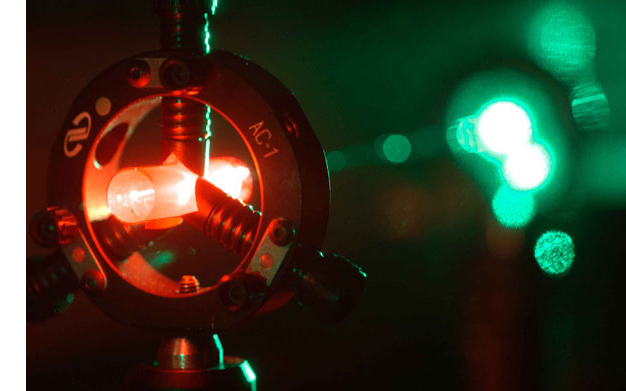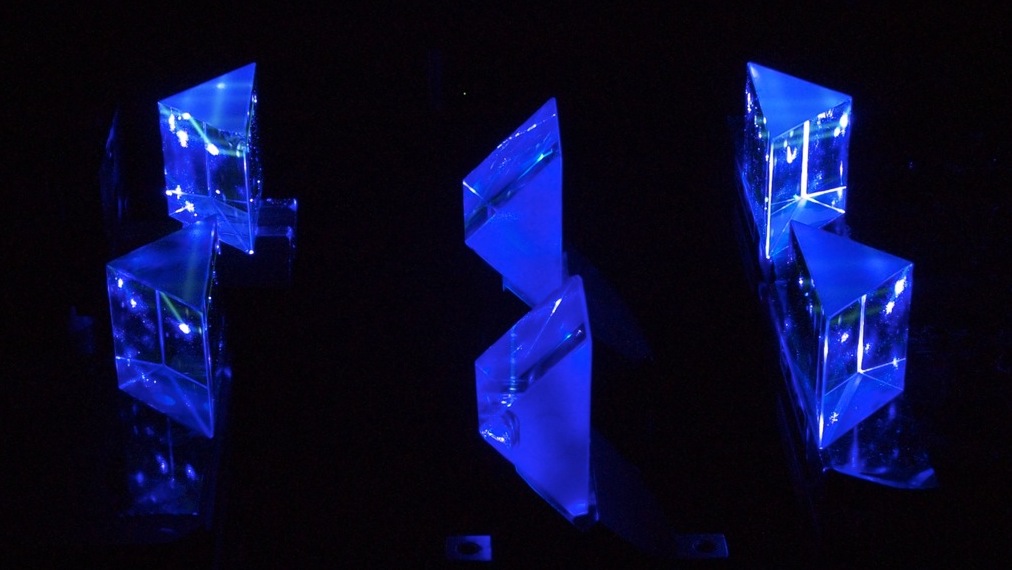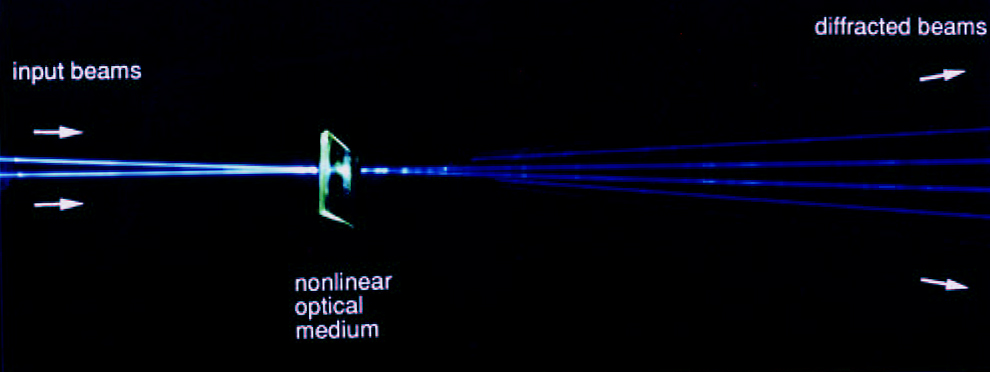Research
Overview
Foundations of Nonlinear Optics
This research area constitutes a "baseline" for much of our more specialized research activities. We are interested in nonlinear optics both for its own sake and as a framework through which to understand a variety of phenomena in the area of optical physics. Examples of topics in this area of ongoing interest include the influence of local field effects on enhancing nonlinear optical processes, studies of cascaded optical nonlinearities, the use of structured materials to facilitate the phase matching of nonlinear optical interactions, and the study of coherence effects in nonlinear optics such as those that lead to superradiance and superfluorescence.
Nanophotonics, Optical Metamaterials, and Plasmonics
Our research in this area has concentrated on how composite and structured materials can be used to control and enhance the properties of nonlinear optical interactions. One part of this work involves the investigation of material structures that lead to a strong modification of the electric field distribution within the material and thereby lead to an overall enhancement of the nonlinear optical response. This basic idea leads to especially strong effects for the case of composite structures that contain a metallic component. In this case, strong modification can occur as a consequence of plasmonic resonances. Our work consists both of studies of random composite structure and of highly controlled structures that are created by the process of nanofabrication.
 Slow and Fast Light
Slow and Fast Light
The ability to control the group velocity of light has recently attracted a tremendous amount of attention from both fundamental and application perspectives. The field, often known as “slow and fast light,” constitutes a broad class of science and technology that can dramatically change the group index of a medium over a certain wavelength range.
Our group has been exploring the origin and various fundamental aspects of slow light. We have developed or demonstrated various slow light mechanisms in room-temperature solid systems, such as coherent population oscillation, stimulated Brillouin scattering, and dispersive delay. We have demonstrated slow light, fast light and backwards light experimentally, and studied how other fundamental physical phenomena, such as photon momentum and rotational drag are affected by slow light. Moreover, our group has been developing vital applications using such technology. Recent work includes a continuously tunable module with both positive and negative time delays for telecommunication systems, a slow-light enabled multi-aperture laser radar system, and slow-light enhanced spectroscopic devices on chip.
Publications by our group on slow and fast light
Quantum Imaging and Information
We are currently exploring the use of large Hilbert spaces for encoding information in a quantum and classical communication system. The orbital angular momentum (OAM) of a photon resides in a discrete, infinite-dimensional state space. Not only does this allow us to send much more information per photon, it also increases the security of a quantum key distribution (QKD) system against eavesdropping. We have built a proof-of-principle QKD system using the basis of OAM modes and the mutual unbiased basis of angular position modes. Currently, we are studying the effects of atmospheric turbulence on this system. In addition, we are developing efficient methods of sorting OAM and angular position modes at the single photon level. Other topics of ongoing research include the direct measurement of the OAM wavefunction through weak measurements, and studies of angular coherence and angular interference.
 Within this part of the group, we are also studying the use of quantum states of light for superresolution and ghost imaging. We have recently performed a quantum superresolution experiment using NOON states and optical centroid measurements. We are also implementing ghost imaging schemes that use compressive sensing techniques to obtain a ghost image faster or to detect changes in a scene. In addition, we are developing active imaging and optical ranging techniques that rely on quantum mechanical principles to provide security against certain kinds of jamming attacks.
Within this part of the group, we are also studying the use of quantum states of light for superresolution and ghost imaging. We have recently performed a quantum superresolution experiment using NOON states and optical centroid measurements. We are also implementing ghost imaging schemes that use compressive sensing techniques to obtain a ghost image faster or to detect changes in a scene. In addition, we are developing active imaging and optical ranging techniques that rely on quantum mechanical principles to provide security against certain kinds of jamming attacks.
Publications by our group on quantum imaging and information

